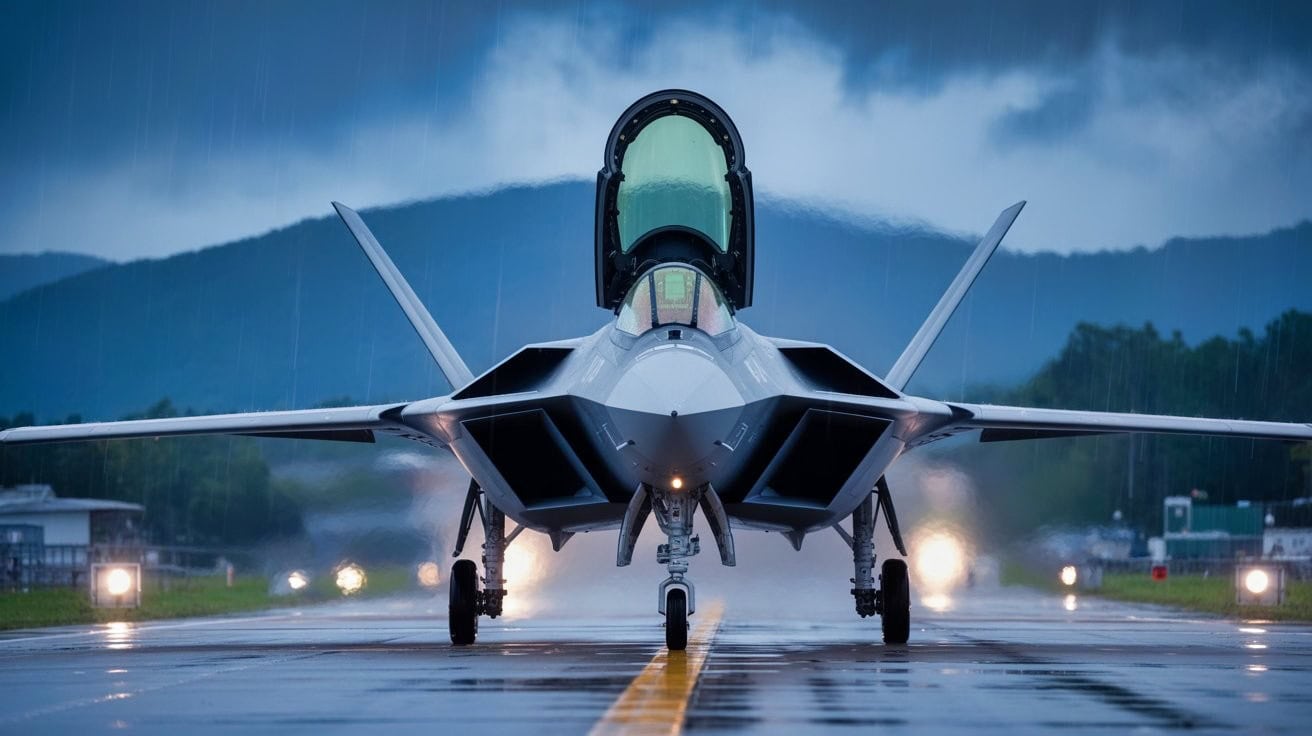Key Points and Summary: Beyond its stealth air superiority mission, China’s J-20 Mighty Dragon appears designed with significant ordnance capacity, potentially serving as a “bomb truck.”
-Reports suggest a maximum payload (internal and external) approaching 28,000 pounds, surpassing the F-35’s “beast mode.”
-While external weapons negate stealth, this configuration allows the J-20 to function as a heavy attacker in less contested airspace, delivering substantial firepower once initial air defenses are suppressed.
-This often-overlooked heavy strike potential, combined with increasing fleet size and advancing domestic engine technology, adds a crucial dimension to the J-20’s capabilities in potential conflicts.
J-20 Beast Mode Is Here
The fifth-generation J-20 stealth fighter jet has been a part of China’s fleet for several years now. But mysteries remain regarding the jet’s performance parameters or its mission scope.
The fighter is regularly reported to be both stealthy and fast, but there is a lesser-known, equally significant element of the J-20 that is often overlooked.
In addition to being developed as a stealthy air-fighter, the J-20 also seems to be designed as a “bomb truck” type of platform able to deliver large amounts of ordnance in areas where China has established air superiority.
Available specs indicate the J-20 can deliver more ordnance than an F-35 on a single mission, as it can take off with 27,998 pounds of internal and external ordnance, compared to an F-35 in beast mode, which can travel with 18,000 pounds of weapons.
The J-31, an experimental aircraft that has evolved into China’s J-35, also travels with a heavy load of weapons—its maximum take-off weight is listed at 28,000 kilograms.
A full internal and external weapons complement, however, would certainly compromise stealth by generating a larger and more precise radar-return signal to adversary air defenses.
A February 2024 essay in the Aviationist shows a photo of a J-20 operating in beast mode. This is a non-stealthy, fully loaded weapons configuration, with missiles and bombs attached to external hardpoints beneath the wings.
In this mode, rather than operating as a stealth fighter, the warplane might act in more of an attacking capacity, carrying more ordnance for longer dwell times and carrying out missions that would not be possible while preserving stealth.
J-20 Fleet Size
The fighter is regularly discussed as a derivative of the F-35 and F-22, intended to rival the U.S. Air Force for air supremacy.
With speeds of Mach 1.8, the J-20 does appear slightly faster than an F-35, but not quite as fast as an F-22, which can travel at Mach 2.25.
In November 2022, high-resolution photos revealed more than 208 J-20 fighters had been built, and experts citing open-source material said a total of four batches of J-20s had been delivered by 2022, with 18, 46, 56, and 70 airframes arriving in each known shipment.
Certainly, Chinese papers write about the J-20’s maturation and demonstrations, as well as technologies such as its WS-15 engine.
Yet, apart from a few training missions, the J-20 has not been airborne much near areas where it might be seen up close.
How Stealthy is China’s Stealth Fighter?
Stealth properties are optimal when temperatures emitting from the aircraft match the surrounding temperature, thereby concealing thermal signature.
The J-20’s structure includes the kind of conformal, blended wing-body shape of many fifth-generation fighters, complete with rounded back-end exhausts.
The F-35 and F-22, by contrast, have singular, gradually sloped horizontal wings. The fighter’s shorter protruding wing, followed by longer wings, might be an attempt to improve stealth performance.
A dual-wing formation could interrupt the speed of the aerodynamic airflow on each side, potentially better managing temperature.
About the Author: Kris Osborn
Kris Osborn is the Military Technology Editor of 19FortyFive and President of Warrior Maven – Center for Military Modernization. Osborn previously served at the Pentagon as a highly qualified expert in the Office of the Assistant Secretary of the Army—Acquisition, Logistics & Technology. Osborn has also worked as an anchor and on-air military specialist at national TV networks. He has appeared as a guest military expert on Fox News, MSNBC, The Military Channel, and The History Channel. He also has a Masters Degree in Comparative Literature from Columbia University.

